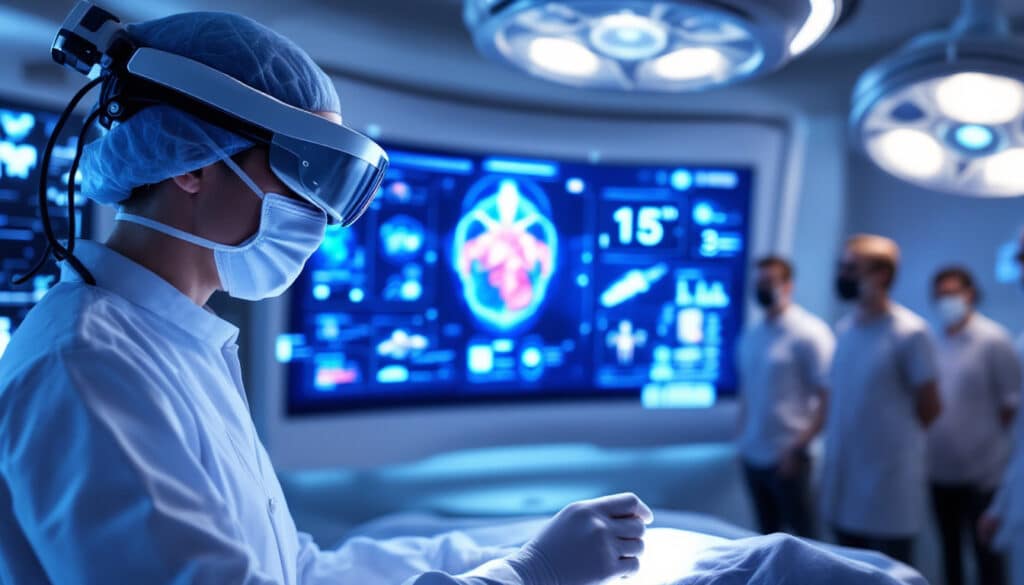Launched this week, the Ministry of Health and Family Welfare in India is redefining its health information management system.This initiative aims to modernize the Health Information Management System of the Central Government Health Scheme.With this update, the ministry responds to contemporary requirements for information technology and cybersecurity.
The CGHS provides comprehensive healthcare to current and former employees of the central government. Last week, the MOHFW decommissioned the old HMIS, which had been in use since 2005, as it was deemed outdated compared to modern IT standards. This decision allows for the replacement of the system with a next-generation version developed by the Centre for Development of Advanced Computing. This new system promises faster, transparent, and user-friendly access to CGHS services, ensuring better delivery of services and increased administrative efficiency.
The enhanced HMIS introduces a unique identifier based on PAN for each beneficiary, eliminating duplicate records and facilitating user verification. Additionally, it automates the verification of contribution payments through its integration with Bharat Kosh, allowing for the approval of CGHS card requests prior to payment. The system also digitizes services such as CGHS card transfers and changes in status and category of dependents. Furthermore, it is capable of generating SMS and email alerts at each stage of CGHS requests.
Alongside the upgrade of the HMIS, the CGHS mobile application on iOS and Android has also been revamped. It features a new user interface, provides access to digital cards and real-time request status, allows for e-referrals and appointment scheduling, and integrates communications with customer service.
This initiative is part of a broader trend of digital transformation within the Indian healthcare system. In recent years, several projects have been launched to develop hospital information systems or HMIS in public hospitals and health facilities. In 2023, the National Health Authority announced the launch of a beta version of an HMIS intended for private clinics and small health structures. Despite these recognized efforts, it remains necessary to integrate these siloed systems to further reduce administrative burden and ensure quick access to health and medical information, as highlighted by the Union Health Secretary, Apurva Chandra.

Why has the central hmIs scheme been decommissioned?
For over two decades, the HMIS health scheme of the Indian central government, known as CGHS (Central Government Health Scheme), has served current and retired employees of the government with comprehensive health services. However, with the rapid evolution of information technology and increasing demands for security and efficiency, the Ministry of Health and Family Welfare of India made the decision to decommission the old HMIS last week. In use since 2005, this system was becoming obsolete in the face of modern IT standards, cybersecurity frameworks, and user expectations.
This technological decline meant that the old HMIS could no longer effectively meet current needs. User enrollment management, request processing, complaint resolution, and information retrieval had become cumbersome and error-prone. The need for a more efficient and secure system became imperative to maintain the quality of services provided to CGHS beneficiaries.
At the same time, digital transformation initiatives in the Indian healthcare sector have highlighted the importance of having integrated and efficient systems. The decommissioning of the old HMIS was thus a crucial step toward improving the country’s digital health infrastructure.
What are the improvements of the new next-generation hmIs system?
The new next-generation HMIS, developed by the Centre for Development of Advanced Computing, represents a significant advancement in the management of health services under the CGHS. Based on press releases, this next-generation system promises faster, transparent, and user-friendly access to CGHS services, thus ensuring an improvement in service delivery and enhanced administrative efficiency.
One of the main innovations of the new HMIS is the creation of a unique PAN-based identifier for each CGHS beneficiary. This feature aims to eliminate duplicate records and streamline user verification, simplifying administrative processes and reducing human errors.
Additionally, the new system automates the verification of contribution payments through its integration with Bharat Kosh, a government financial platform. This integration allows for rapid verification and approval of CGHS card requests before payment, thus speeding up the process for beneficiaries.
The modernized HMIS system also digitizes services such as CGHS card transfers and changes in status and category of dependents. Furthermore, it is capable of generating SMS and email alerts at each stage of CGHS requests, thereby offering better communication and increased transparency for users.
For more information on innovations in health, see this biography.
How does the new hmIs improve the management of cghs beneficiaries?
The management of beneficiaries is at the heart of the improvements made by the new HMIS of CGHS. With the introduction of the unique PAN identifier, each user is now easily identifiable, significantly reducing the risks of duplicate records. This unique identification also facilitates beneficiary verification, making the process smoother and less prone to errors.
The new system also automates the management of contribution payments through its integration with Bharat Kosh. This automation allows for quicker and more accurate payment verification, ensuring that only eligible beneficiaries access services. Moreover, the verification and approval of CGHS card requests prior to payment expedite the registration process and enhance user experience.
By digitizing services such as card transfers and changes of status for dependents, the new HMIS simplifies the administrative procedures for beneficiaries. These features allow users to manage their personal and family information independently and efficiently, without having to go through cumbersome manual processes.
Furthermore, SMS and email alerts at every stage of requests ensure continuous communication between the system and users, providing increased transparency and reducing uncertainty regarding the status of their requests. These improvements play a crucial role in optimizing the management of beneficiaries, making CGHS services more accessible and better meeting user needs.
To explore how leaders are analyzing the state of AI in the healthcare sector, visit this analysis.
What are the benefits of the new cghs mobile application?
In addition to the HMIS upgrade, CGHS has also revamped its mobile application available on iOS and Android. This modernized application introduces a new user interface that makes accessing CGHS services more intuitive and enjoyable for users. The app now allows users to access digital cards, track request status in real time, and perform e-referrals as well as schedule medical appointments directly from a smartphone.
The digitization of CGHS cards provides a secure and convenient alternative to physical cards, thus reducing the risk of loss or theft. Users can easily access their health information and request details in real time, enhancing their overall experience with the CGHS system.
The e-referral and appointment scheduling features enable beneficiaries to save time and more effectively organize their medical visits. The integration of communications with customer service also allows for quicker resolution of issues encountered by users, thereby enhancing satisfaction and confidence in the CGHS system.
Furthermore, the application sends automatic notifications via SMS and email at each stage of requests, ensuring smooth and transparent communication between the system and users. These enhancements make the CGHS mobile application an essential tool for beneficiaries, facilitating access to and management of health services in a simplified and effective manner.
To discover potential solutions to the growing demand for MedTech supplies, see this solution.
What is the broader trend of digital transformation in the Indian healthcare system?
The update of the HMIS CGHS is part of a broader trend of digital transformation within the Indian healthcare system. In recent years, several digital transformation projects have been launched to modernize hospital and healthcare information systems across the country. For instance, Delhi invested in a $20 million project in 2021 to develop an HMIS covering all public hospitals and health facilities.
In 2023, the National Health Authority announced the launch of a beta testing phase for an HMIS intended for private clinics and small health structures. These initiatives demonstrate the ongoing commitment of the Indian government to digitize health information management, with the aim of making healthcare services more accessible, efficient, and integrated.
Despite the progress made, the Union Health Secretary, Apurva Chandra, has emphasized the need to integrate these siloed systems to further reduce administrative burden and ensure quick access to medical and health information. Integrating various health information systems would allow for better coordination between public and private health facilities, facilitating data sharing and improving patient care.
This system integration is essential to create a coherent and effective digital health ecosystem. It not only enhances the quality of care but also promotes a more transparent and accountable management of health resources. Furthermore, digital transformation contributes to strengthening the resilience of the health system in the face of future challenges, such as pandemics or natural disasters.
To understand how health sector leaders view AI as a key for success, consult this resource.
The decommissioning of the Health Management Information System (HMIS) of the Indian central government marks the end of a two-decade era dedicated to managing public health data. Since its launch in 2005, the HMIS has been a vital pillar for monitoring and administering the health services offered by the Central Government Health Scheme (CGHS) to current and retired employees. However, in light of the rapid evolution of information technologies and user expectations, it became imperative to modernize this system.
The replacement of the old HMIS with a “next-generation” version, developed by the Centre for Development of Advanced Computing, represents a significant advancement. This new platform promises faster, transparent, and user-friendly access to CGHS services, while improving administrative efficiency. The introduction of a unique PAN-based identifier for each beneficiary will eliminate the duplication of records and simplify user verification, thereby enhancing the security and reliability of data.
Moreover, the automation of contribution payment verification through integration with Bharat Kosh and the validation of CGHS card requests before payment illustrate the government’s commitment to optimizing administrative processes. The digitization of services such as CGHS card transfers and changes in dependent status, as well as the sending of SMS and email alerts, reflect the desire to make services more accessible and responsive to user needs.
Alongside the HMIS upgrade, the redesign of the CGHS mobile application for iOS and Android provides an improved user interface, access to digital cards, real-time tracking of requests, as well as the ability to schedule appointments and perform electronic referrals. These innovations facilitate a smoother interaction between beneficiaries and health services, thereby enhancing the overall user experience.
In a broader context, this initiative is part of a national trend towards the digital transformation of Indian health systems. While many transformation projects have already been undertaken, integrating fragmented systems remains a major challenge to be addressed. The decommissioning of the old HMIS and the introduction of its modern successor represent decisive steps towards a more efficient, integrated, and future-oriented healthcare system capable of meeting contemporary demands for health information management.














